Product test
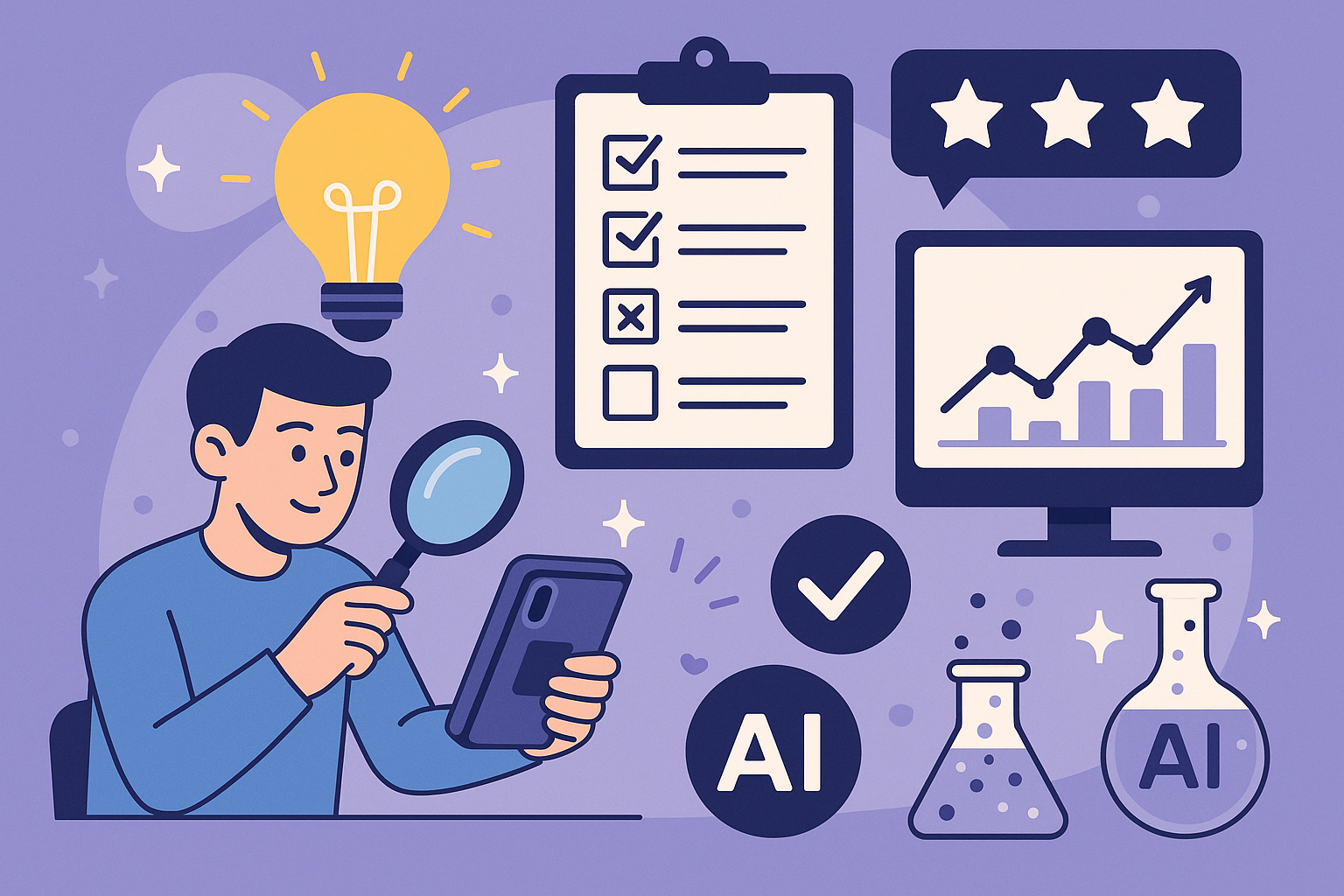
Product testing: How targeted product tests increase quality and improve customer experiences
How successful a product is is not only decided in the laboratory or on the drawing board - but by the people who use it. And this is precisely why product tests are more important today than ever before. They provide companies with valuable first-hand data, uncover weaknesses, confirm strengths and help to further develop innovations without risk.
Whether tech gadget, food or app: a professionally conducted product test is a strategic tool for quality control, product optimization and customer loyalty. In this article, we will show you how to use product tests sensibly, what methods are available and how modern technologies such as artificial intelligence are revolutionizing analysis.
"If you don't know what your customers think, you can't know what you need to improve."
Shep Hyken, Customer Experience Expert
Why product tests are indispensable for companies
Consumer expectations are rising - and with them the pressure on companies to deliver perfect products. Product tests help to meet this demand by:
Provide objective feedback before a product is launched on the market
Identify weak points at an early stage
Realistically test new ideas
Assessing price-performance ratios
Avoid legal risks and reputational damage caused by defective products
Involving customers in development - and thereby retaining them
Product tests are therefore not only a control instrument, but also an innovation and marketing tool.
Objectives and benefits of a product test
A product test pursues different goals - depending on the industry, product and development phase:
Improve product quality: Functionality, user-friendliness, workmanship
Understanding customer expectations: What is important? What is missing?
Check market suitability: Is the product accepted? What irritates the users?
Refine positioning: Which target groups are particularly appealing?
In addition, a competitive analysis provides valuable comparative data on positioning against competitors.Collect feedback: For marketing, design, packaging, naming etc.
Ensure safety: Especially for food, toys, technical products
"Quality means the customer comes back - not the product."
Hermann Tietz
The process of a product test - step by step
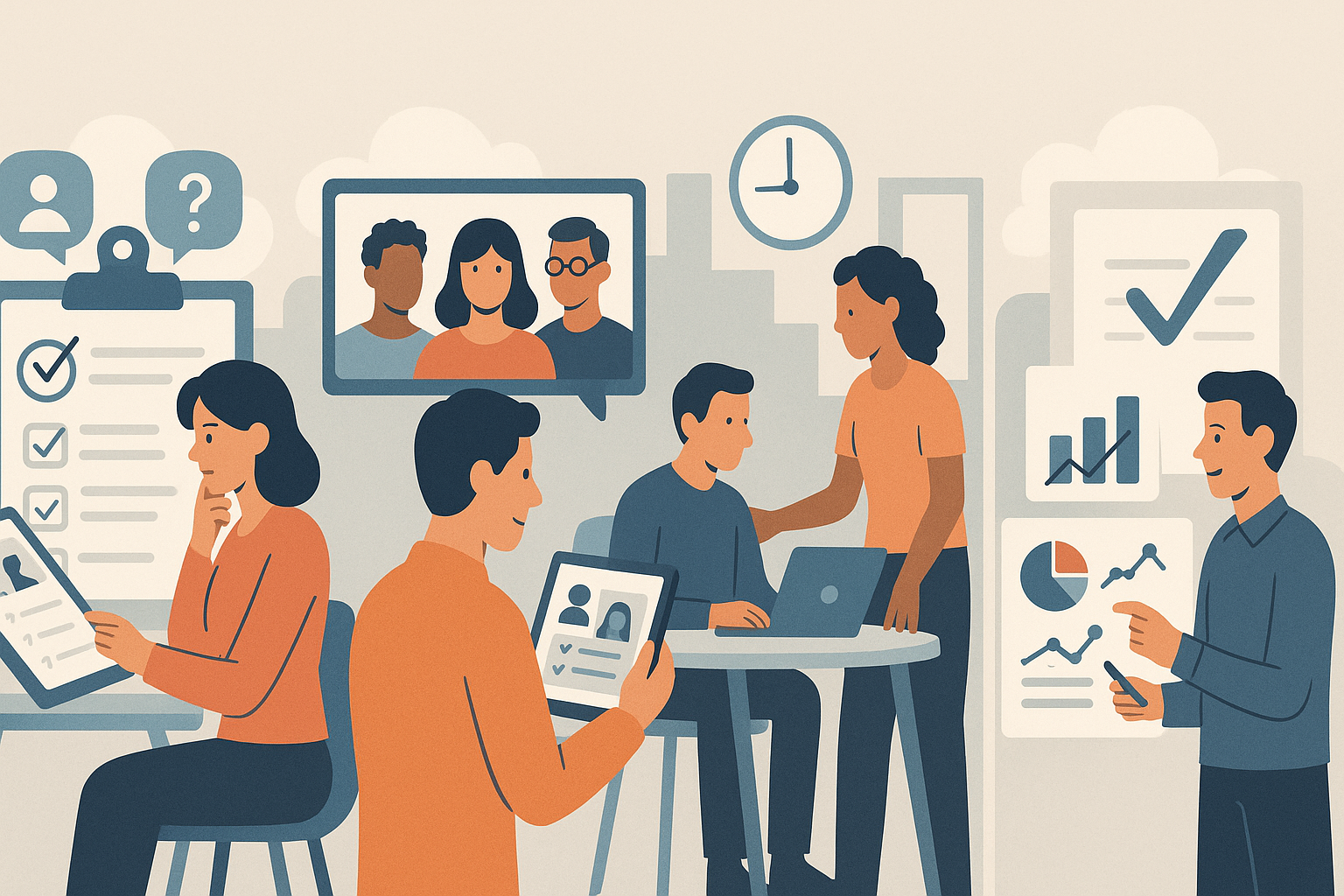
1. target definition & planning
What should be tested?
Which target group is relevant?
Which method fits?
Which questions should be answered?
The clearer the objective, the more precise the results.
2. selection of test subjects
Existing customers or new target groups?
Which socio-demographic characteristics are important?
How many testers are needed?
A balanced group improves the significance of the results.
3. implementation of the product test
At home, in the store, in the lab or digitally?
Anonymously or with direct support (e.g.via a focus group)?
How long should the test take?
Important: create realistic usage situations.
4. survey & evaluation
Combination of qualitative & quantitative methods
Digital tools and AI for analyzing patterns
Sentiment analysis, ratings, surveys, interviews
5. derivation of recommendations for action
What works - what doesn't?
Where is there potential for optimization?
Which changes have priority?
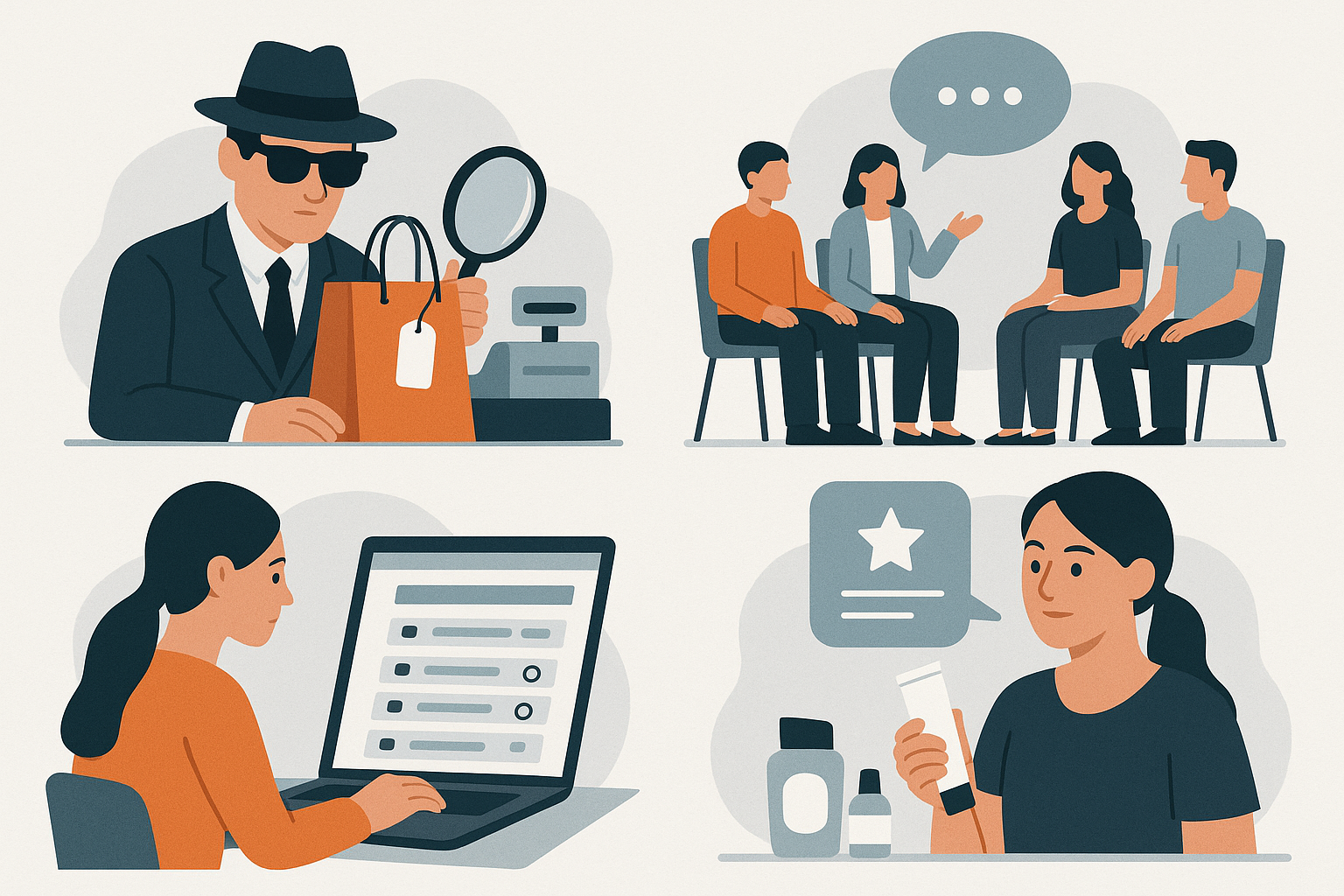
Product test methods: Which one suits your goal?
Mystery Shopping
Anonymous testers buy or test a product in a real environment - for example in retail or customer support. This method is perfect for assessing service, presentation and the sales process.
A test purchase is a popular form of mystery shopping in which products or services are specifically tested.
Focus groups
In moderated group discussions, customers openly discuss a product. This is particularly valuable for gaining an in-depth understanding of emotional aspects, brand impact and points of criticism.
Online surveys
Cost-effective, scalable and good for quantitative evaluation. Particularly suitable for large target groups, standardized questions and rapid feedback.
Product tests at home (home use tests)
Testers receive products to try out in everyday life - with subsequent feedback. Authentic, practical and particularly valuable for household products, cosmetics and technology.
Especially in the hospitality sector mystery guesting where anonymous guests evaluate service quality and processes on site.
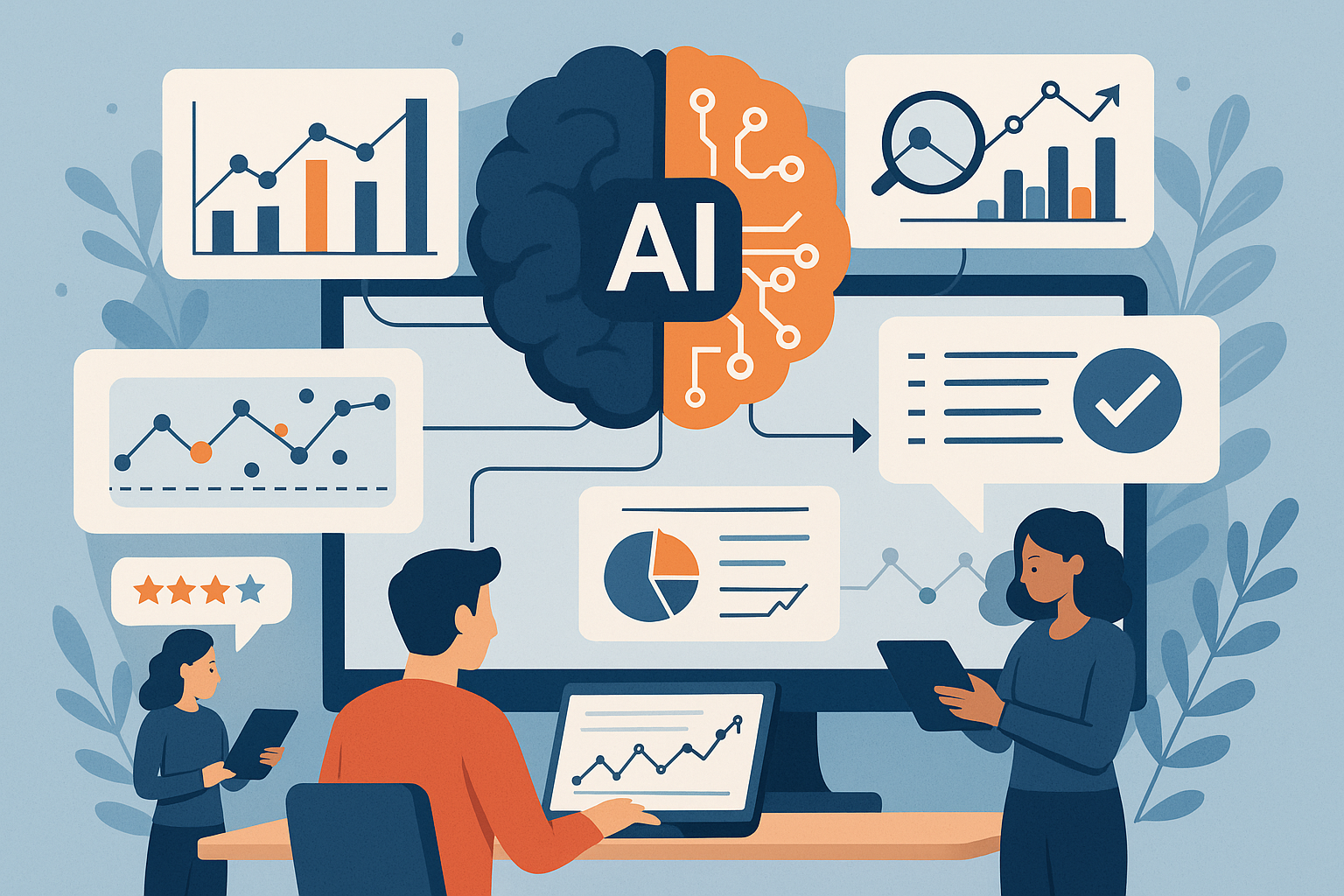
The role of artificial intelligence (AI) in product testing
Modern product tests rely on AI-supported tools to:
Analyzing large amounts of data in real time
Sentiment analysis in open feedbacks
Recognition of trends, patterns & outliers
Benchmarking with other products or target groups
Derivation of concrete recommendations for action
Example: An electronics manufacturer analyzes 2,000 tester feedbacks using AI. Result: The word "complicated" appears more frequently than average in relation to the menu navigation - a clear indication of UX problems.
"AI does not replace testers - but it helps to derive better decisions from tests."
Kai-Fu Lee (analogous)
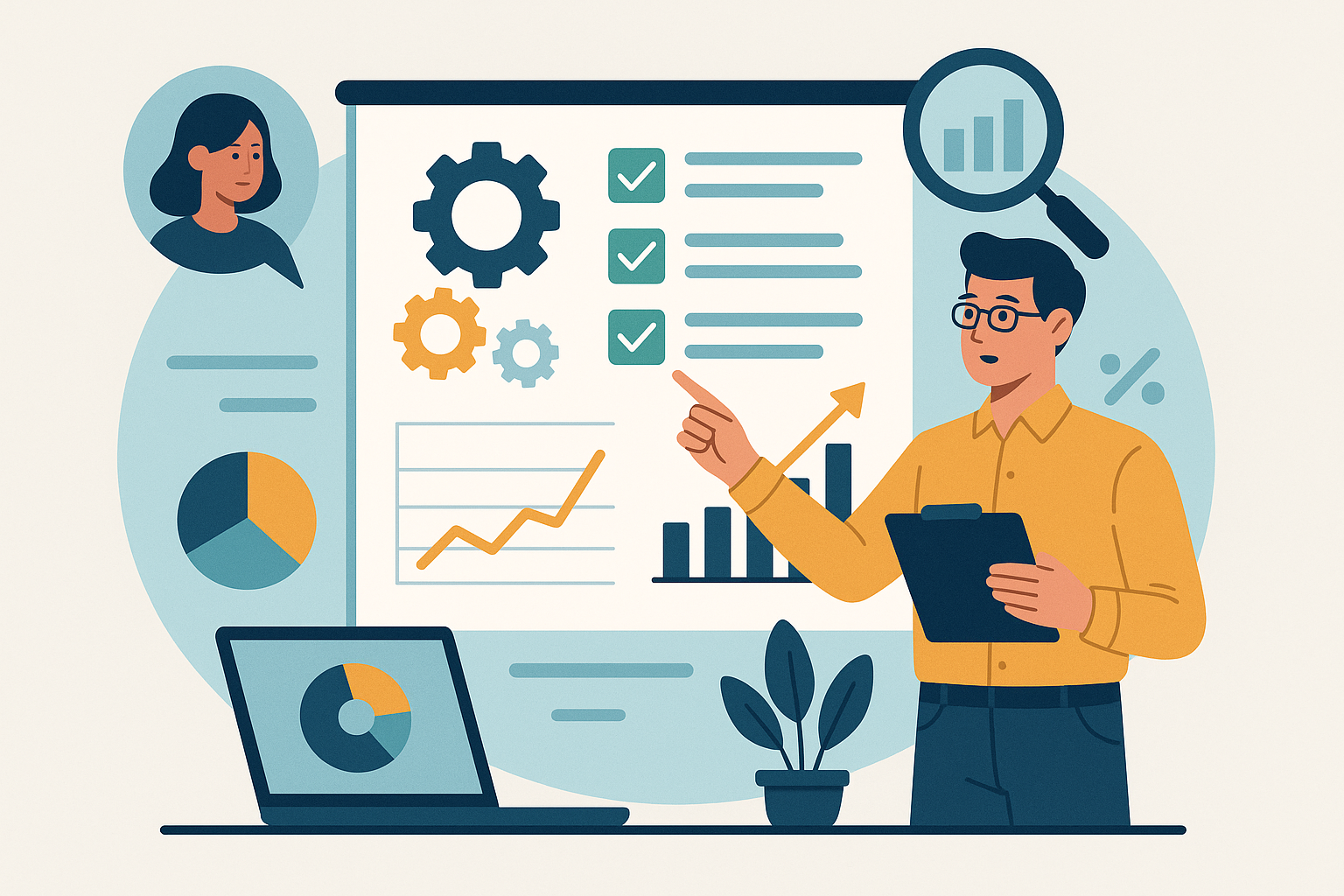
What happens after the product test?
A successful test does not end with the final feedback - now the implementation begins.
Prioritize improvements
What is critical (e.g. safetydeficiencies)?
Whatcanbe changedin the short term (e.g. packaging, instructions)?
What needs long-term development (e.g.new features)?
Communicate internally
Decision-makers, development, marketing, sales - everyone should know the results.
Implementation & retesting
After changes have been made, a follow-up test should check whether the adjustments are effective.
Monitoring & KPI tracking
Customer satisfaction, return rates, support requests - all of these can be measured. And shows: Were the product adaptations successful?
Conclusion: Product tests as a strategic success factor
Product tests are not a "nice-to-have", but a central component of modern product development and brand management. They help to make products better, meet customer expectations - and sometimes even exceed them.
Whether in start-ups, SMEs or corporations - anyone who develops products should regularly test, analyze, learn and improve. This is the only way to create genuine, convincing quality.
Request a quote now!
We convince with fixed prices per test, price guarantee and our free evaluation portal!
- We will be happy to advise you personally:
- Arrange consultation appointment
- Call: +49 (0)511 - 93678594
- ma@mystery.agency
Contact form
750
Projects
90.000
Store checks
15
Countries
250
Satisfied customers
FAQ - Frequently asked questions about product tests
What is a product test?
A product test is a structured evaluation of a product by real users who test the product and give their feedback - on quality, use, functionality or price-performance.
How do I find suitable testers?
Via our own customer databases, specialized platforms or external agencies. Important: The target group should match the intended buyers.
What does a product test cost?
This depends on the scope, method and number of testers. Small tests start at a few hundred euros, while large projects can cost several thousand euros - depending on the industry and objective.
Which products are suitable for product testing?
Almost all of them: consumer goods, technology, digital services, software, food, cosmetics, clothing - wherever customer experience counts.
Can I become a product tester as a private individual?
Yes, many companies and platforms are regularly looking for test persons. Honesty, reliability and a willingness to provide feedback are important.
If you would like to become a mystery shopper yourself, specialized agencies and platforms offer entry-level opportunities.
Do product tests also make sense for small companies?
Absolutely! Especially for start-ups or SMEs, product tests are a cost-effective way of obtaining direct customer feedback and getting the product ready for the market.